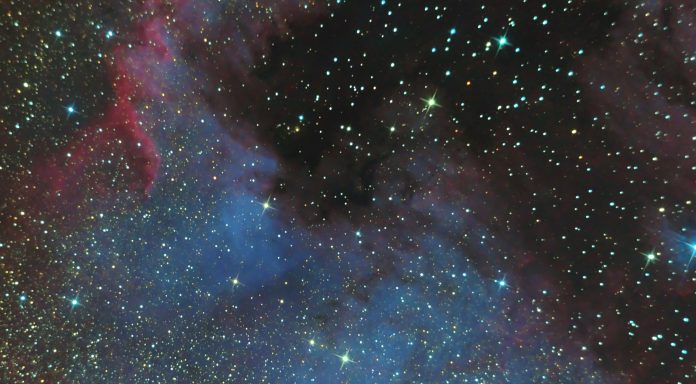MIT astrophysicists looked 163,000 light years from Earth, to find that a tiny, ancient galaxy has a dark matter halo – meaning that the very first galaxies in the universe were more immense than anyone imagined
MIT graduate student Anirudh Chiti, commented: “Tucana II has a lot more mass than we thought, in order to bound these stars that are so far away. This means that other relic first galaxies probably have these kinds of extended halos too.”
This appears to be the first evidence that the dwarf galaxy, Tucana II, has an extended dark matter halo, which is a region of gravitationally bound matter. The research team find that this halo is three to five times more massive than any scientist previously thought – meaning that the first galaxies ever were likely more immense than imagined.
Stars with low metal content were among the first stars
Tucana II is one of the most primitive dwarf galaxies based on the metal content of its stars. Stars with low metal content likely formed very early on, when the universe was not yet producing heavy elements. In the case of Tucana II, astronomers had previously identified a handful of stars around the galaxy’s core with such low metal content that the galaxy was deemed the most chemically primitive of the known ultrafaint dwarf galaxies.
The researchers wondered if there were older stars here, that might shed light on the formation of the universe’s first galaxies. To test this idea, they obtained observations of Tucana II through the SkyMapper Telescope, an optical ground-based telescope in Australia that takes in wide views of the southern sky.
The team used an imaging filter on the telescope to spot primitive, metal-poor stars beyond the galaxy’s core.
The team ran an algorithm, developed by Chiti, through the filtered data to efficiently pick out stars with low metal content, including the previously identified stars at the centre and nine new stars much further out from the galactic core.
The team further found that the stars on the outskirts of Tucana II are more primitive than the stars at the galaxy’s core.
Again, this is the first known imbalance of stars in an ultrafaint dwarf galaxy.
The first instance of galactic cannibalism
“We may be seeing the first signature of galactic cannibalism,” says Anna Frebel, the Silverman Family Career Development Associate Professor of Physics at MIT.
“One galaxy may have eaten one of its slightly smaller, more primitive neighbors, that then spilled all its stars into the outskirts.”
Anirudh Chiti further explained: “This is the first time we’ve seen something that looks like a chemical difference between the inner and outer stars in an ancient galaxy.”
A likely explanation for the imbalance may be an early galactic merger, in which a small galaxy, maybe even among the first generation of galaxies to form in the universe, literally swallowed another nearby galaxy.
This galactic cannibalism occurs constantly throughout the universe today, but it was unclear whether early galaxies merged in a similar way to what we see in contemporary space.
Frebel further commented: “Tucana II will eventually be eaten by the Milky Way, no mercy. And it turns out this ancient galaxy may have its own cannibalistic history.”











